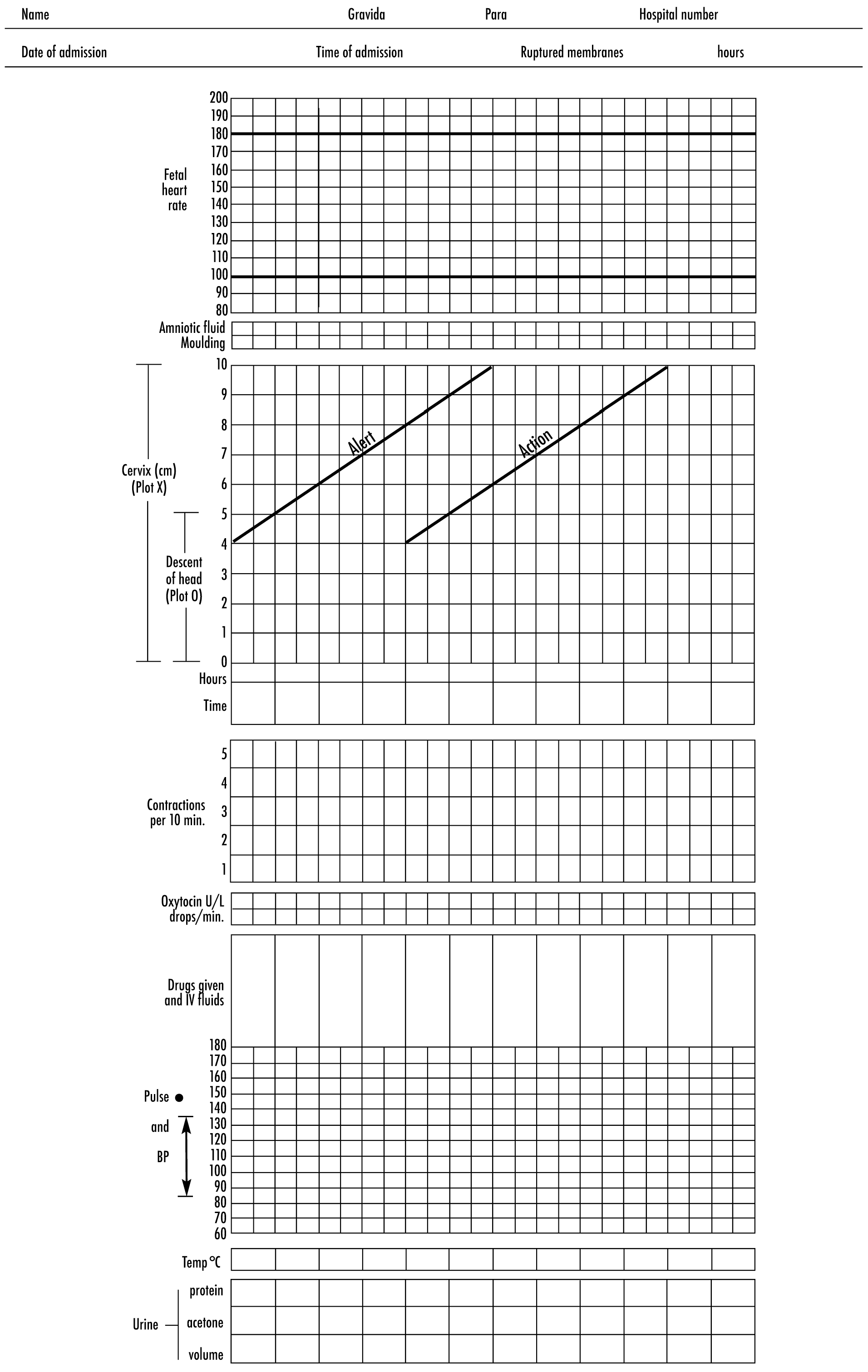5.2.1 Partograph
The partograph is a tool for monitoring maternal and foetal wellbeing during the active phase of labour, and a decision-making aid when abnormalities are detected. It is designed to be used at any level of care.
Its central feature is a graph used to record the progress of cervical dilation, as determined by vaginal examination.
Start the graph at 5 cm of dilation, and 3 contractions every 10 minutes. In certain situations, e.g. induction of labour, it is started at 4 cm of dilation.
Indicators are plotted on the graph each time they are checked:
- Maternal indicators:
- Vital signs (heart rate, blood pressure and temperature)
- Time of spontaneous or artificial rupture of the membranes
- Uterine contractions (number per 10 minutes and duration)
- Urine output
- Drugs administered (oxytocin, antibiotics, etc.)
- Foetal indicators:
- Foetal heart rate
- Amniotic fluid (colour, odour and quantity)
- Descent of the foetal head and head moulding
5.2.2 Interpreting the WHO partograph
The WHO partograph has two diagonal lines: an alert line and an action line.
The alert line goes from 4 to 10 cm and corresponds to an average dilation rate of 1 cm per hour. If the labour curve crosses to the right of this alert line, this means that the dilation is less than 1 cm per hour. In this case, transfer to a CEmONC facility must be considered if the woman is at an outpatient clinic or a BEmONC facility. If the woman is at a CEmONC facility, closer monitoring is required.
The action line is located 4 hours to the right of the alert line. If the dilatation curve crosses this line, decisions must be made (augmentation of labour, artificial rupture of membranes, caesarean section, etc.). See Chapter 7.
The WHO partograph
5.2.3 Immediate postpartum maternal monitoring
- Vital signs (heart rate, blood pressure, temperature and respiratory rate), blood loss and uterine retraction:
- between Hour 0 and Hour 2: every 15 to 30 minutes
- between Hour 2 and Hour 4: every hour
- Verify that the woman drinks and urinates.
- Check if there are other treatment indications, e.g., antibiotherapy for prolonged rupture of membranes with intra-uterine infection (Chapter 4, Section 4.9.3), anaemia (Chapter 4, Section 4.1), etc.
- In case of caesarean section, see Chapter 6, Section 6.4.
For monitoring and care following the immediate postpartum, see Chapter 11, Section 11.2 and Section 11.4.
